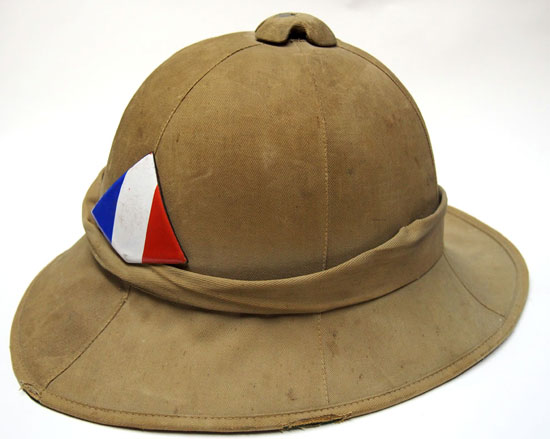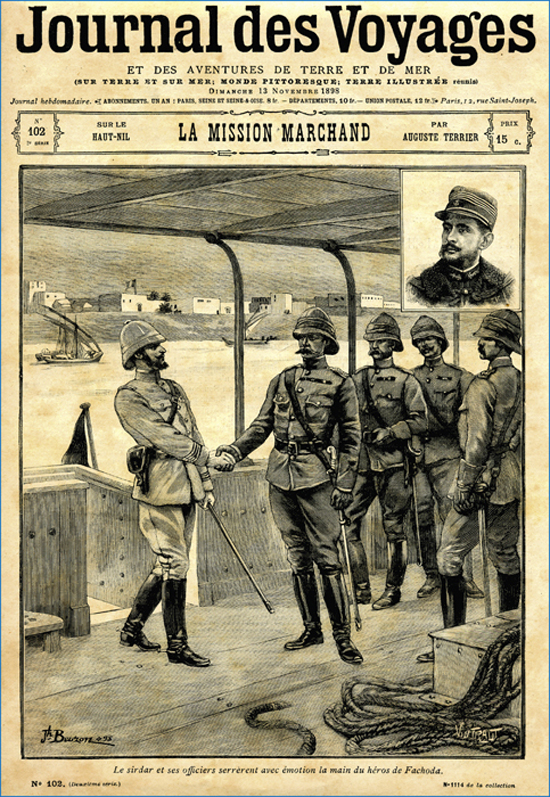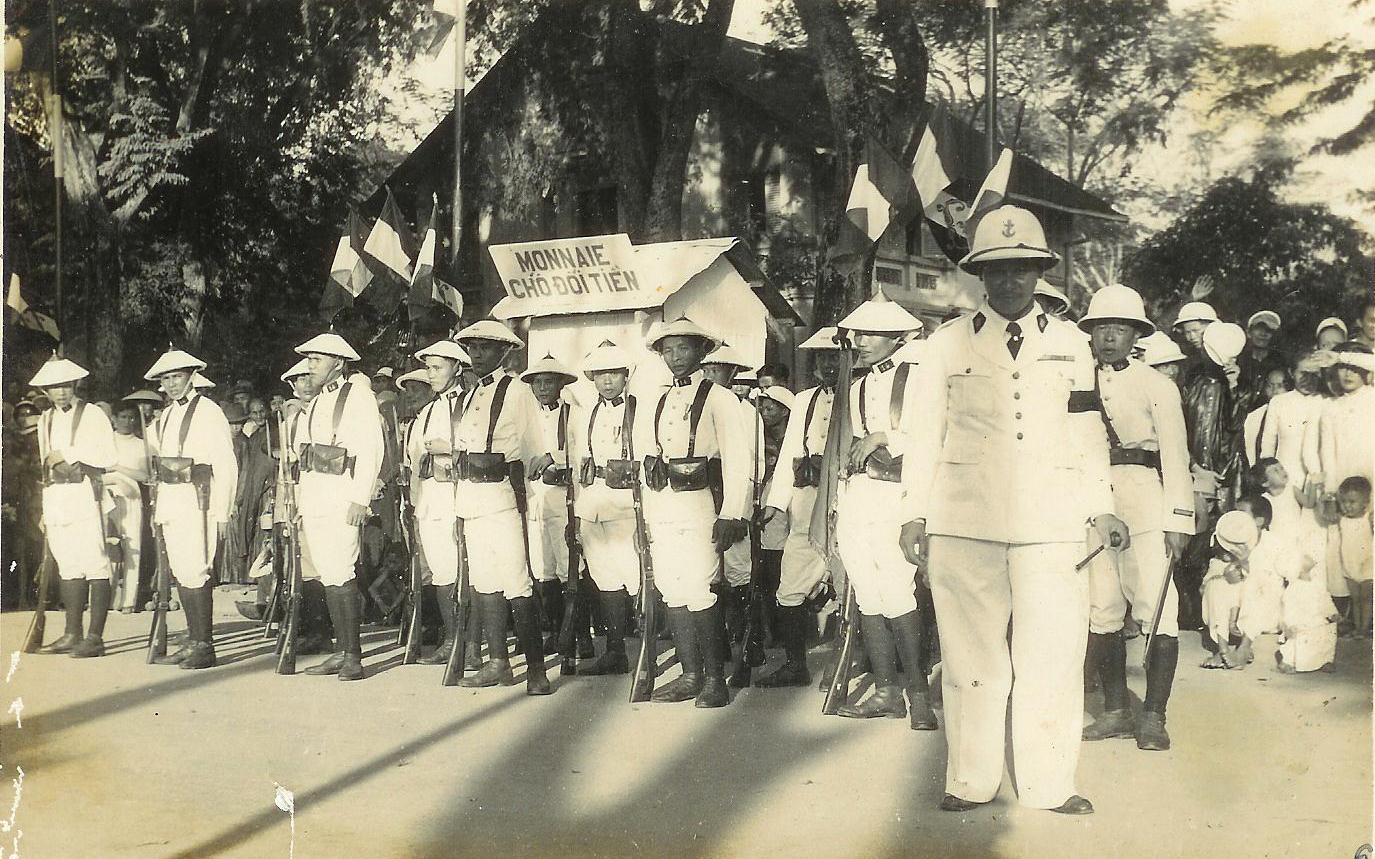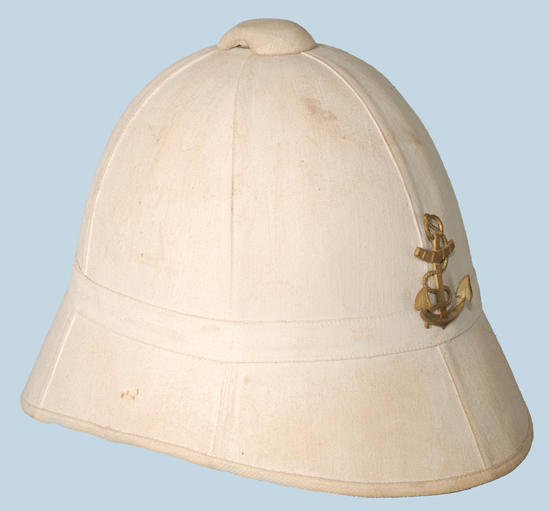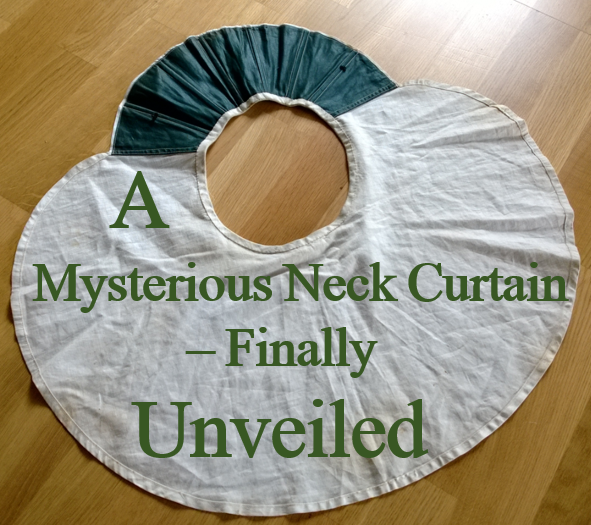 Neck flaps or neck curtains to be attached on a sun helmet are much rarer to find than any kind of helmet itself. No wonder one tries to get hold on any flap that comes along. Like the one that is the subject of this article. Now, this example but turned out to be something completely different, than a piece of military equipment. But – nevertheless – it is interesting to learn more about it. Continue reading
Neck flaps or neck curtains to be attached on a sun helmet are much rarer to find than any kind of helmet itself. No wonder one tries to get hold on any flap that comes along. Like the one that is the subject of this article. Now, this example but turned out to be something completely different, than a piece of military equipment. But – nevertheless – it is interesting to learn more about it. Continue reading
Category Archives: French
Free French Sun Helmets
In May 1940 the German Army invaded France and six weeks later Paris fell. An armistice was signed between France and Germany, but Charles de Gaulle quickly formed a government-in-exile and created the Free French Forces.
One of the principal units raised was the 1st Free French Division, which was first organized under British sponsorship as the 1st Free French Light Division in May 1941 near Tel Aviv. This unit was issued British equipment including sun helmets – and it engaged Vichy authorities in the Levant (modern day Lebanon and Syria). Units of the division continued to serve with Allied Forces and fought at Bir Hakeim and El Alamein. Continue reading
Tropical Disease and the History of Military Head Nets
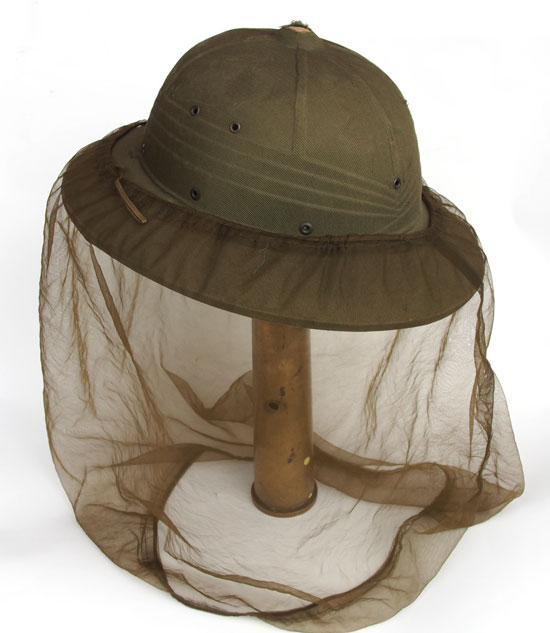
An American Army tropical “Pressed Fiber” helmet and mosquito net from the Vietnam War era of the late 1960s (Author’s Collection)
The military sun helmet was introduced to save lives, not from bullets or even spears but from quite literally from the sun. The European soldiers – first the British but later the French, Belgian, Spanish, Portuguese and Germans – fell victim to sun stroke and heat stroke in their respective newly obtained colonies. The sun helmet offered protection from the sun and along with better tropical clothing likely helped save countless lives beginning in the second half of the 19th century.
The other problem facing soldiers as well as diplomats, colonists and workers was tropical disease. Among the most deadly was yellow fever. Even today in many tropical regions – especially Africa and South America – yellow fever continues to be a major problem. Today nearly a billion people live in an area of the world where the disease is common. Yellow fever originated in Africa but spread to South America through the slave trade in the 17th century, and since that time there have been major outbreaks in the Americas, Africa and even Europe. Continue reading
Marchand and the Race for Fashoda
While there are many “eminent Victorians” in British military history the French have fewer such characters. One largely unknown outside of France was Major Jean-Baptiste Marchand, who led the French expeditionary force during the Fashoda Incident.
Born in Thoisssey, Ain during the Second French Empire in 1863, he participated in the French conquest of Senegal and was wounded at the capture of Diena by the French in 1889. He explored the sources of the Niger River and even tracked the source of the Nile. Continue reading
The Conical Hat of Asia
As we previously have noted in our study of the Conical Asian Hat of the Hong Kong Police, this unique version of the sun helmet – known as the “rice hat,” “paddy hat,” or even pejoratively as the “coolie hat” – was one that had been primarily used by civilians. However, in many cases the line between “civilian” and “military” is blurred, especially in times of insurrections and uprisings. In these cases the conical hat, used as much by so-called peasants in the fields, became a headgear of war.
It was also, as the above photo suggests, a form of true military headgear – with the French and British relying on the conical straw hat for use by indigenous troops in South East Asia and China. The above photo shows French Marine Infantry volunteers in French Indo-China circa 1935. Continue reading
The Original Camouflage: Khaki Part II – Khaki’s Use Throughout the French Empire of the Third Republic
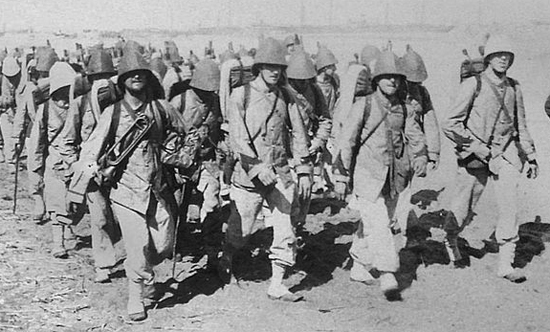
French soldiers in Madagascar – While officers retained the traditional blue tunics, the ranks wore khaki jackets and shirts
While its origins lay in British India, the use of khaki was not limited to the British Army. By the end of the 19th century most of the nations of Europe that had colonies overseas had begun to utilize similar colored “tropical” uniforms. One interesting irony is that in many cases European officers and NCOs were outfitted with their “European” style uniforms, while colonial troops wore the khaki colored ones. Many of these colors were never officially deemed “khaki” but the colors were extremely close in practice.
It was Britain’s traditional enemy – and later its closest ally – that soon adopted khaki throughout its global empire.
The French Colonial Pattern Helmet
Just at the colonial pattern sun helmet remains an iconic image of Britain’s “Soldiers of the Queen,” this style helmet was worn by the French forces in far flung conflicts. And whereas the British pattern seemed to evolve with numerous nuances and differences in a plethora of patterns and variations, the French military relied on basically two colonial patterns. Continue reading

